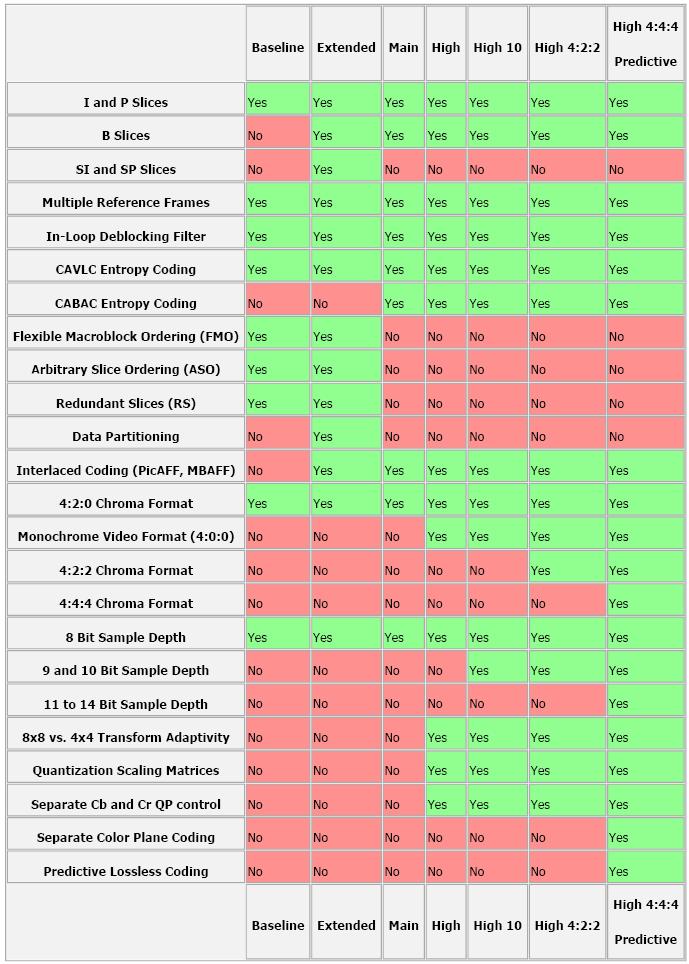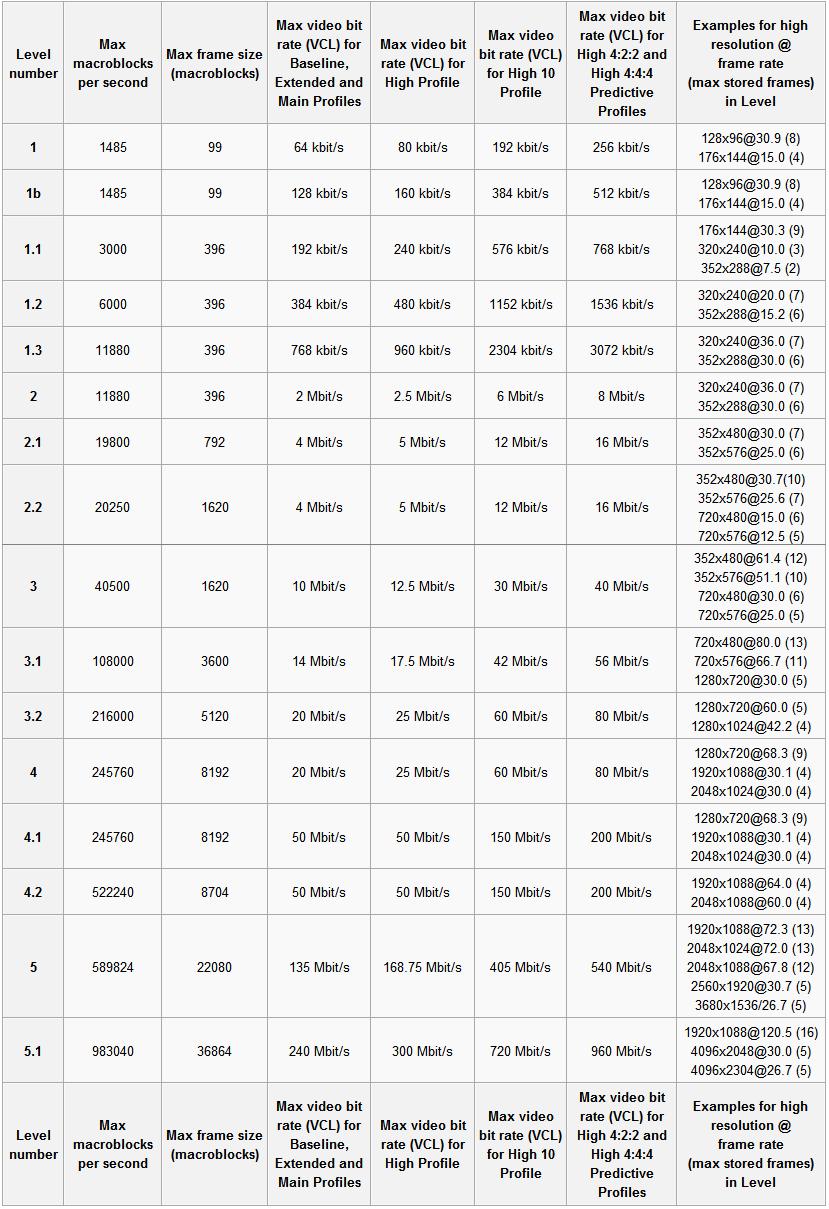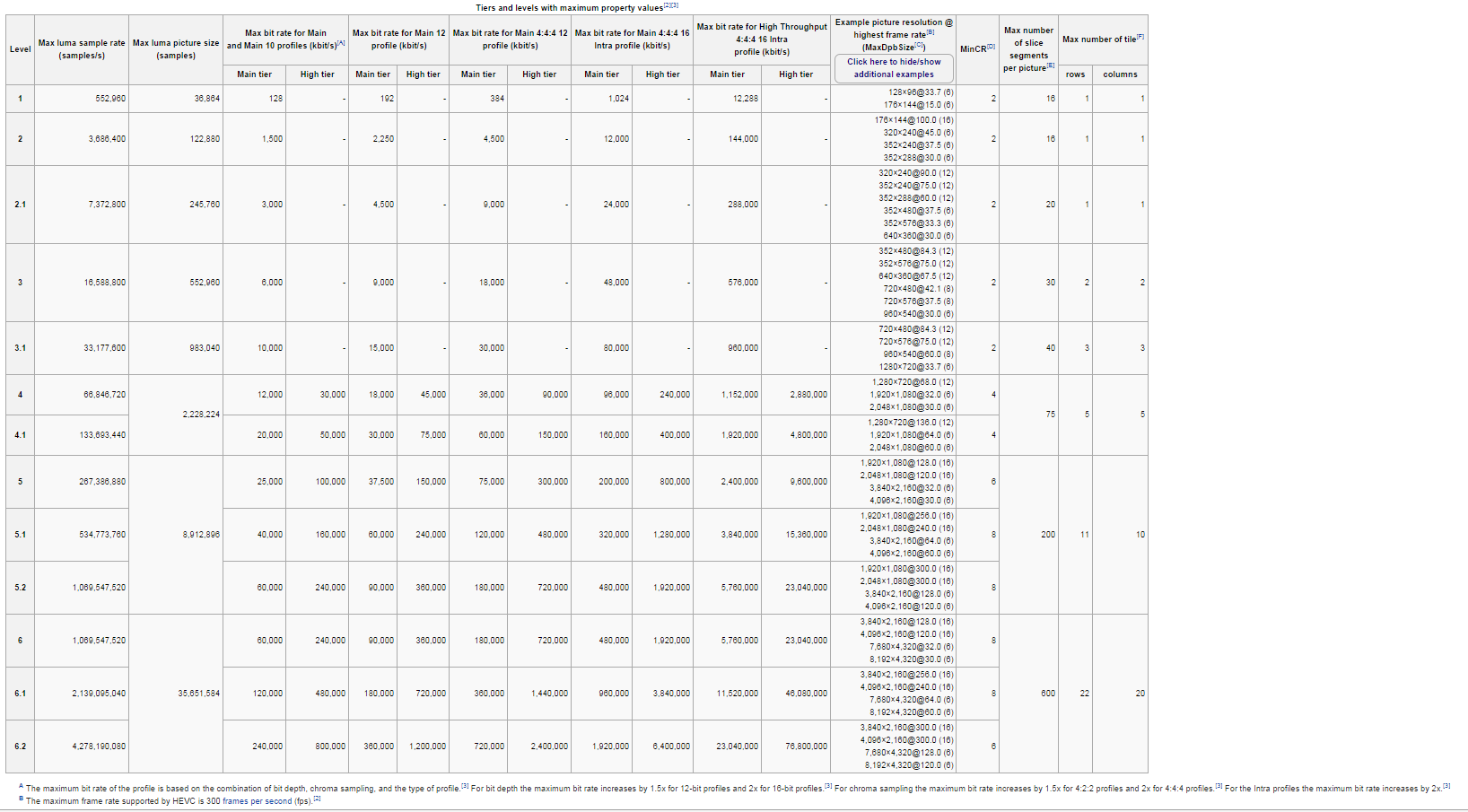背景知识
先科普一下profile&level。(这里讨论最常用的H264)
H.264有四种画质级别,分别是baseline, extended, main, high:
1、Baseline Profile:基本画质。支持I/P 帧,只支持无交错(Progressive)和CAVLC;
2、Extended profile:进阶画质。支持I/P/B/SP/SI 帧,只支持无交错(Progressive)和CAVLC;(用的少)
3、Main profile:主流画质。提供I/P/B 帧,支持无交错(Progressive)和交错(Interlaced),
也支持CAVLC 和CABAC 的支持;
4、High profile:高级画质。在main Profile 的基础上增加了8x8内部预测、自定义量化、 无损视频编码和更多的YUV 格式;
H.264 Baseline profile、Extended profile和Main profile都是针对8位样本数据、4:2:0格式(YUV)的视频序列。在相同配置情况下,High profile(HP)可以比Main profile(MP)降低10%的码率。
根据应用领域的不同,Baseline profile多应用于实时通信领域,Main profile多应用于流媒体领域,High profile则多应用于广电和存储领域。
下图清楚的给出不同的profile&level的性能区别。
profile
level
2.1 ffmpeg如何控制profile&level
举3个例子吧 ffmpeg -i input.mp4 -profile:v baseline -level 3.0 output.mp4 ffmpeg -i input.mp4 -profile:v main -level 4.2 output.mp4 ffmpeg -i input.mp4 -profile:v high -level 5.1 output.mp4








 本文详细介绍了H264编码的Baseline、Extended、Main及Highprofile的区别,以及H265的层级和等级设定。通过实例展示了如何使用ffmpeg控制编码的profile、level、preset和CRF参数,以平衡编码效率和视频质量。
本文详细介绍了H264编码的Baseline、Extended、Main及Highprofile的区别,以及H265的层级和等级设定。通过实例展示了如何使用ffmpeg控制编码的profile、level、preset和CRF参数,以平衡编码效率和视频质量。


















 1105
1105

 被折叠的 条评论
为什么被折叠?
被折叠的 条评论
为什么被折叠?








